(MHRA) - Revision of EC regulation on medical devices
advertisement
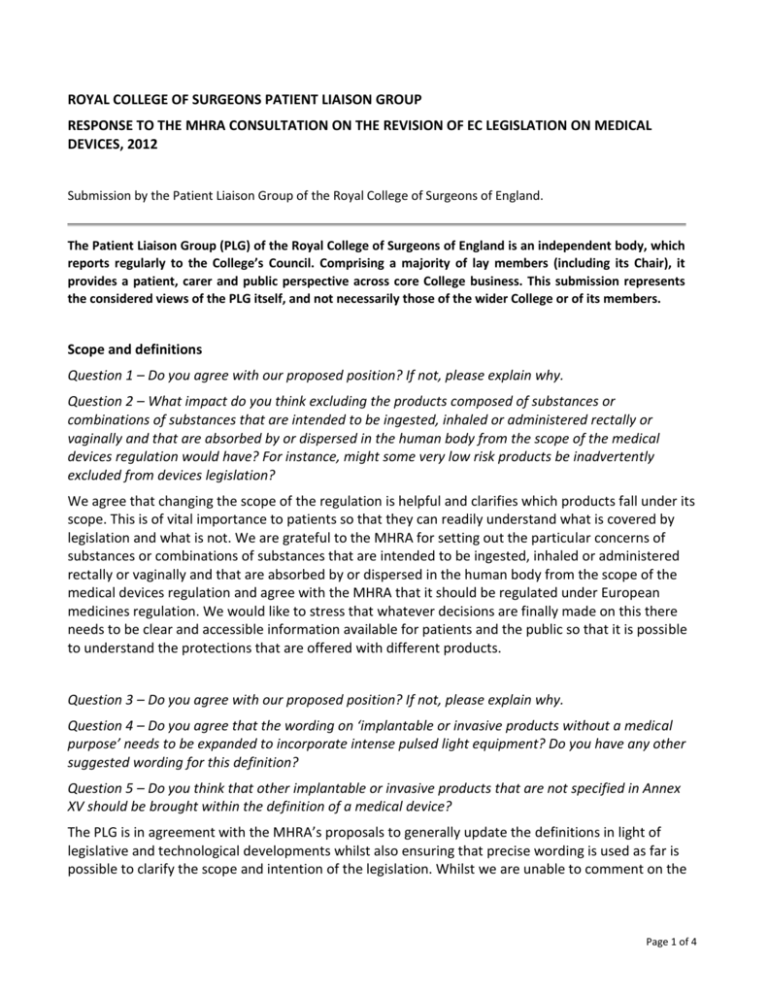
ROYAL COLLEGE OF SURGEONS PATIENT LIAISON GROUP RESPONSE TO THE MHRA CONSULTATION ON THE REVISION OF EC LEGISLATION ON MEDICAL DEVICES, 2012 Submission by the Patient Liaison Group of the Royal College of Surgeons of England. The Patient Liaison Group (PLG) of the Royal College of Surgeons of England is an independent body, which reports regularly to the College’s Council. Comprising a majority of lay members (including its Chair), it provides a patient, carer and public perspective across core College business. This submission represents the considered views of the PLG itself, and not necessarily those of the wider College or of its members. Scope and definitions Question 1 – Do you agree with our proposed position? If not, please explain why. Question 2 – What impact do you think excluding the products composed of substances or combinations of substances that are intended to be ingested, inhaled or administered rectally or vaginally and that are absorbed by or dispersed in the human body from the scope of the medical devices regulation would have? For instance, might some very low risk products be inadvertently excluded from devices legislation? We agree that changing the scope of the regulation is helpful and clarifies which products fall under its scope. This is of vital importance to patients so that they can readily understand what is covered by legislation and what is not. We are grateful to the MHRA for setting out the particular concerns of substances or combinations of substances that are intended to be ingested, inhaled or administered rectally or vaginally and that are absorbed by or dispersed in the human body from the scope of the medical devices regulation and agree with the MHRA that it should be regulated under European medicines regulation. We would like to stress that whatever decisions are finally made on this there needs to be clear and accessible information available for patients and the public so that it is possible to understand the protections that are offered with different products. Question 3 – Do you agree with our proposed position? If not, please explain why. Question 4 – Do you agree that the wording on ‘implantable or invasive products without a medical purpose’ needs to be expanded to incorporate intense pulsed light equipment? Do you have any other suggested wording for this definition? Question 5 – Do you think that other implantable or invasive products that are not specified in Annex XV should be brought within the definition of a medical device? The PLG is in agreement with the MHRA’s proposals to generally update the definitions in light of legislative and technological developments whilst also ensuring that precise wording is used as far is possible to clarify the scope and intention of the legislation. Whilst we are unable to comment on the Page 1 of 4 particular safety aspects referred to in the document, our overall interest is in promoting patient safety and would welcome any measures that are taken in this regard. Placing on the market and putting into service: the medical devices regulation Question 10 – Do you agree with our proposed position? If not, please explain why. In particular, we would find it helpful to understand the potential impact of the change to the ‘in-house exemption’ on health institutions. We agree that there should be a requirement on manufacturers to provide a clinical evaluation of products whether they are manufactured in-house or externally as to patients the standards for safety should be the same wherever the manufacture takes place. The reprocessing of single-use devices Question 19 – Do you agree with our proposed position? If not, please explain why. Question 20 – Do you agree with our assessment of the likely impact of this provision? As a patient group, we remain confused as to why single-use devices are used more than once, we would support a proposal that enhances patient safety and controls what is currently largely unregulated practice. We have concerns that standards might vary across the EC leaving patients largely unprotected if they do not know from where devices being used on them originate, or are reprocessed. We recognise that this may cause issues for manufacturers demonstrating conformity but stress that patient safety should be paramount in all decisions. Implant card: medical devices regulation Question 21 – Do you agree with our proposed position? If not, please explain why. In particular, do you have any views on how this concept could be improved? We agree with the proposed legislation that manufacturers of implantable devices should provide an implant card for patients that is in plain language and include: the Unique Device Identification code, any relevant warnings, the expected lifetime of the device and any follow-up of which the patient should be aware. We recognise MHRA’s concerns that patients may have a large number of devices implanted in a single operation and the devices may in turn be made up of a number of components. However we believe that managing these difficulties does not detract from the main provision of the legislation which is that patients should be given and asked to retain information on the devices they have had implanted so that the appropriate action can be taken in the future if this becomes necessary. Identification, traceability and transparency of devices Question 25 – Do you agree with our proposed position? If not, please explain why. Question 26 – To what extent will storing details on the receipt and supply of devices place an additional burden on economic operators? Page 2 of 4 The PLG strongly supports the measure to simplify the existing system by replacing multiple national registrations with a single central registration. We believe this will have a significant impact on patient safety by ensuring that manufacturers are not tempted to play the system by seeking to register their products in countries with less focus on patient safety. We also agree that enhancing the ability of the MHRA to trace devices along the supply chain is a welcome improvement and stress that patient safety should always have precedence over concerns about additional economic burdens. Question 27 – Do you agree with our proposed position? If not, please explain why. We strongly agree with the introduction of a unique device identification (UDI), as happens currently with custom-made dental devices, to facilitate the identification and traceability of devices from manufacture through distribution to use with a patient to ongoing implantation with that patient allowing both the effective recall of devices if and when necessary as well as analysis of their ongoing performance. Question 29 – Do you agree with our proposed position? If not, please explain why. Question 30 – What information do you think it would be helpful to include in the summary of safety and performance? We also support the establishment of a new central database to facilitate the sharing of information, cooperation between Member States and improve the transparency of information for patients. In addition we strongly support the requirement to produce a summary of safety and performance of devices to increase transparency for clinicians and patients. We support the MHRA’s recommendation that the regulation should spell out the level of detail at which the information summaries should be provided and emphasise that it is not only clinicians who would value the additional clinical evidence but also patients, so that they can make more informed decisions before agreeing to the use of a particular device. We wondered whether this legislation could also be strengthened by requiring clinicians to provide patients with sufficient evidence for the patient to review the efficacy of the devices available and potentially suitable for their needs as is currently good practice when discussing custom-made dental devices with a dentist. Notified bodies Question 31 – Do you agree with our proposed position? If not, please explain why. Question 32 – Are there other activities that could support the quality and consistency of national authorities overseeing notified bodies? We agree that the regulations should set out clearer requirements for national authorities, which are responsible for designating notified bodies in order to maintain and enhance standards across the EC. We note the MHRA’s comment that this will have limited impact in the UK but believe it will offer greater protection for patients either receiving devices from other EC states or having devices used on them whilst visiting those countries. Page 3 of 4 Clinical evaluation and general requirements on clinical investigations: the medical devices regulation Question 50 – Do you agree with our proposed position? If not, please explain why. We agree with the proposal that manufacturers will no longer be able to solely rely on data from clinical investigations but must also include a clinical evaluation of literature to demonstrate the safety and performance of their devices. We understand that this will be an important way to drive an improvement in the standard of clinical evaluations by manufacturers and the assessments of clinical evidence by notified bodies. We would also like to see: minimum standards set for what should be included in clinical evaluations, and proper and effective reviews undertaken of clinical evaluations received from manufacturers so that evidence is used as a real means of assessing a device and that manufacturers are not able to produce the information that supports their device reaching the market ie a right and proper focus on patient safety above everything else. We remain unclear whether it is possible to use lessons from the IVD regulations but suggest that lessons are learnt from good practice in other areas where this exists. Vigilance and market surveillance Question 56 – Do you agree with our proposed position? If not, please explain why. The PLG supports the establishment of a central vigilance database and agree with the MHRA that, in the interests of patient safety, there should be a deadline for manufacturers to report field safety corrective actions if there is a serious threat to the public’s health. We also agree that there should linkages between databases so that the central database allows for easy search and input by competent authorities in order to enable swift actions to be taken in such cases. We also agree that the reporting of trend data for all classes of devices would allow dialogue and research to be initiated in any areas where the data suggests the benefit of further investigations. Page 4 of 4
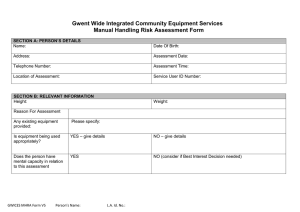
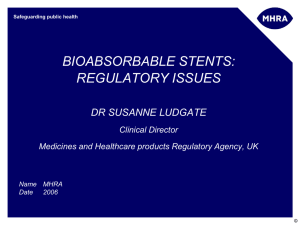

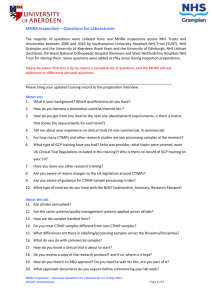
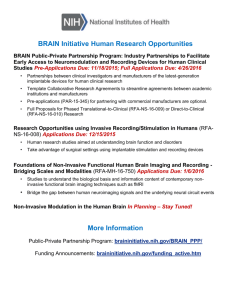
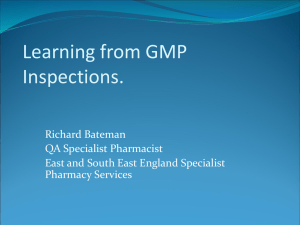
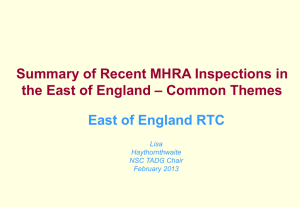
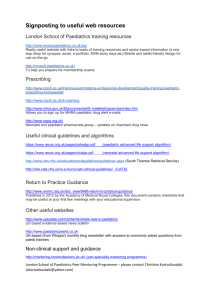

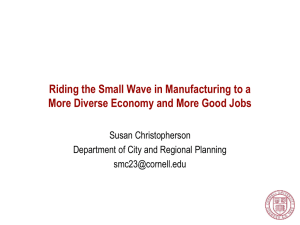
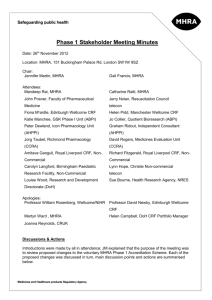
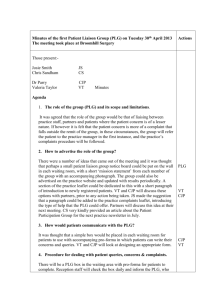
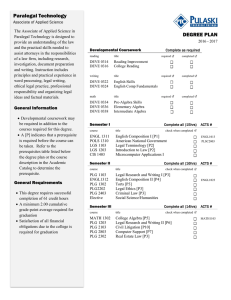
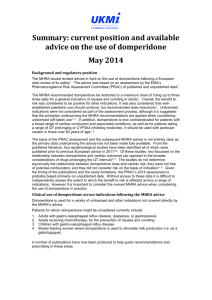
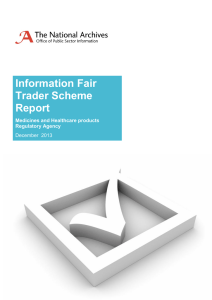
![MHRA Enforcement Strategy 2010[1]](http://s2.studylib.net/store/data/018785343_1-300c3b6d48c7335d08f27729cda389bd-300x300.png)